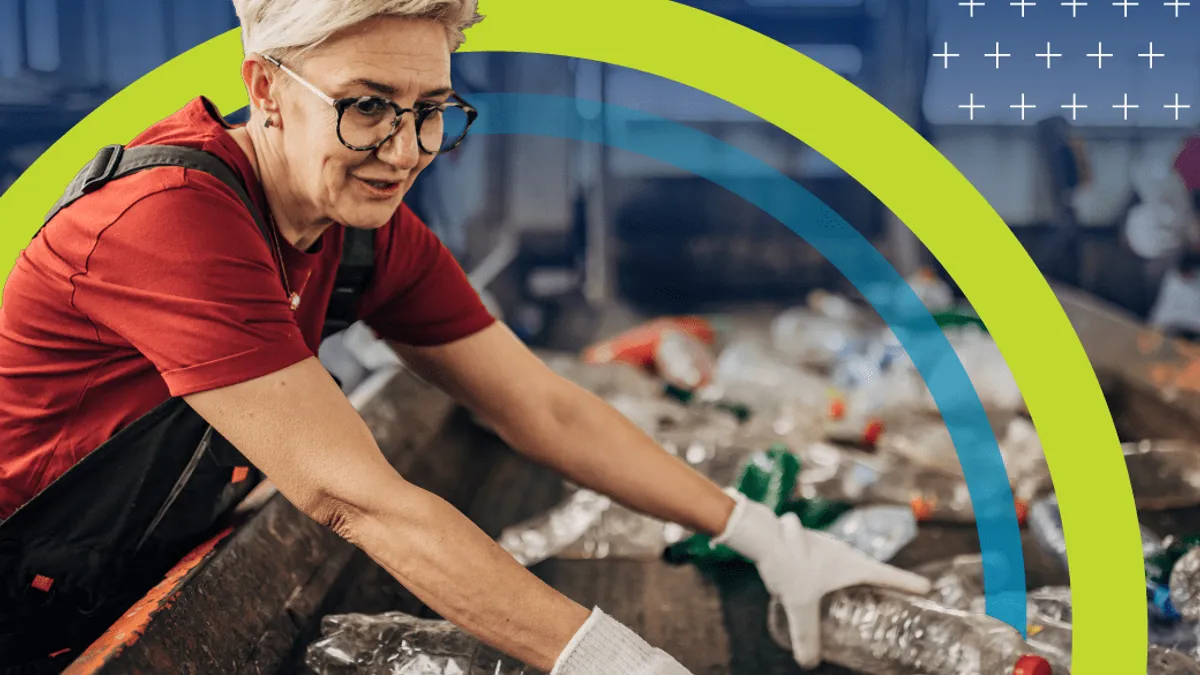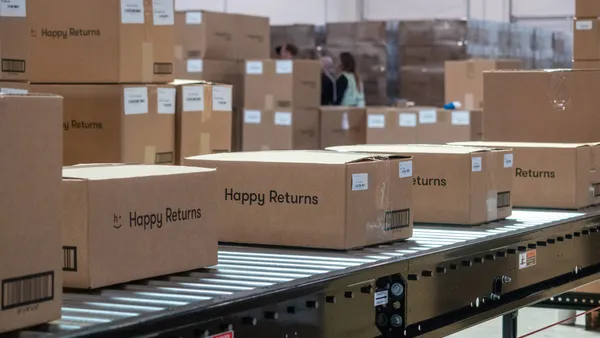What if waste wasn’t…wasted? From single-use plastics to fast fashion, the current “take, make, waste” model of our supply chain is driving greater resource scarcity and is not, in a word, sustainable. The problem isn’t just concentrated at the consumer’s end point of the supply chain — it’s estimated that $163 billion worth of inventory is discarded every year due to overproduction and expiration. That amounts to 8% of the supply chain, which means massive amounts of resources are being wasted on products that won’t even be used once.
At the same time, consumers are increasingly demanding greater sustainability in manufacturing and distribution. They want longer-lasting products, too: 48% of people rank product durability as one of their top three factors when making a purchase.
The time has come to implement circular solutions to take waste out of supply chain models. Upcycling and keeping items out of waste streams are crucial parts of this effort.
How can producers and manufacturers keep their products out of landfills and reap the benefits of circularity? Let’s explore key steps on this journey:
Circularity starts with product data
Simply put, data about a product provides visibility into its lifespan and how it can be repurposed or resold. The first step is to have globally unique identifiers so that stakeholders throughout the supply chain can trace where raw materials for a product came from, where a product was assembled or processed, and exactly what it’s composed of.
Global Trade Item Numbers (GTINs) and Global Location Numbers (GLNs), for example, precisely identify products and locations and provide a foundation for data sharing across the supply chain. When data about critical events is captured, like through a barcode scan for example, and shared, stakeholders can then have a full view of the who, what, where, when and why of a product’s journey that can beaccessed through 2D barcodes, such as QR codes, that serve as digital product passports (DPPs).
“The more relevant and transparent data we have about a product, the better equipped we are to keep it out of waste streams or ensure that it ends up in the most appropriate one,” says Vivian Tai, Director of Innovation, Community Engagement, with GS1 US, the leading not-for-profit information standards organization. “Making this information available to stakeholders is just as important in the post-consumer supply chain—for example, a garment containing synthetic fabrics that may impact its recyclability,” she says.
DPPs and 2D barcodes allow trading partners and end consumers to access product data that communicates recyclability or other end-of-life disposal methods, as well as expiration dates, durability information and more, depending on the product. By starting with unique identifiers and capturing key product data, everyone throughout the supply chain is better informed on how to keep items out of waste streams.
Traceability turns waste into profit
With that unique product information, brands and producers can reclaim and even resell products that otherwise would have ended up as waste. Upcycling can require an initial investment, but brands are creating new sources of revenue through re-commerce. For instance, fashion house Eileen Fisher has reclaimed two million garments and resold, remade or donated one million of them. The Renew program started as a way to collect employees’ used items, but it’s since expanded to customers’ clothing as well.
UNIQLO also collects their used clothes and donates usable pieces to people in need worldwide, and if an item cannot be worn, its components are recycled to make insulation or soundproofing materials. These revenue streams wouldn’t exist without creative efforts to turn waste into something valuable.
End consumers increasingly care about circularity as well, particularly as Gen Z becomes a primary source of consumer spending. “Consumers want to know if an item was made through fair labor practices, or that it was grown in a location not linked to deforestation,” Tai says. “Secondhand markets for clothing and durable goods are booming, and buyers want to know they’re getting a quality item that will last and that doesn’t conflict with their principles.”
With 2D barcodes and unique product identifiers, consumers can access the information they want and be confident in making a purchase or upcycling an item through re-commerce or reselling platforms. Brands can build loyalty and positive perception by participating in this type of circular economy. Patagonia, for example, is known for providing quality upcycled pieces as well as new clothing, and they enjoy a loyal customer following.
These actions prevent greenwashing claims, and they significantly reduce a brand’s carbon footprint and environmental impact. Keeping items out of waste streams demonstrates tangible progress on sustainability while still generating business growth. “Traceability and visibility into your products really foster trust and connections with customers,” says Tai, “and that translates into seemingly elusive triple bottom line growth.”
Rethinking waste for a sustainable future
At the end of the day, it’s important to remember that sustainability and profitability are not mutually exclusive. “Companies need to prioritize ‘People, Planet, Profit’ because without healthy people and a healthy planet, economic prosperity is unsustainable,” Tai says.
By capturing and sharing product data throughout the supply chain, producers and consumers alike can make a difference—and brands can develop new revenue streams, increase brand loyalty and reduce environmental damage all at the same time. When we rethink waste and turn it into a resource, it’s a win-win for sustainability and economic growth.
Learn more about improving your sustainability with GS1 supply chain solutions.










